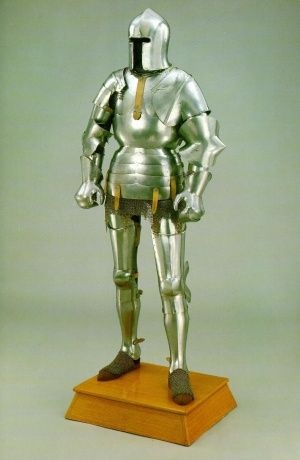While the exposed belt holding the placard in position might be destroyed by the opponent, you have to ask yourself: is it worth it?
Destroying the belt will have some effect on the knight, since the placard will not sit in its proper place anymore. However, I doubt that the knight will be severly hampered. Reenactors with a suit of armour of this style could easily test this.
On the other hand, if you attack the belt, you are not attacking the knight. This opens you to counter-attack.
So, my guess it that the belt is a low-gain, high-risk option for the attacker. Thus, there is little need for the armourer to protect the belt in any way.
Here's a demonstration from a YouTuber, who focusses on many topics medieval on his italian armour:
He undoes the front strap holding the plackard to the breastplate. However, first there is another strap at the back, and second, there's the wearers body in the way.
So, simply cutting the front strap will not lead to the plackard simply falling away if there is more than one attachment.



